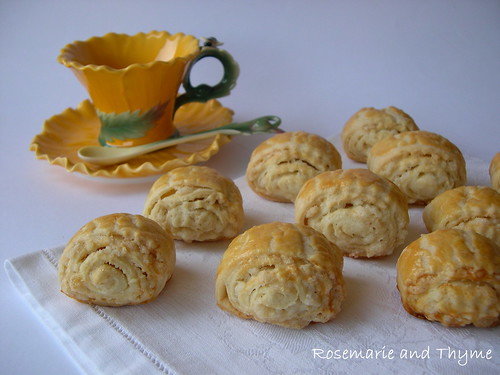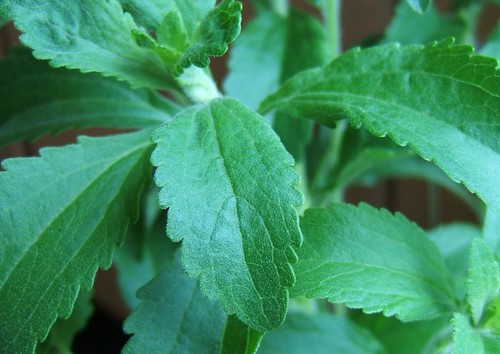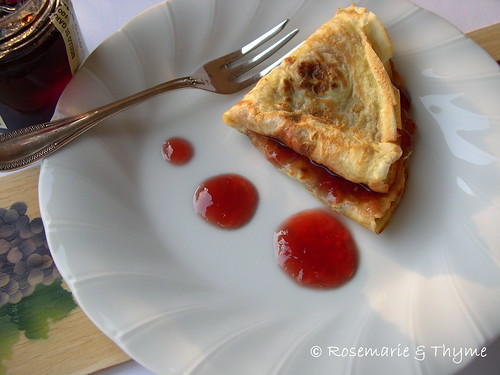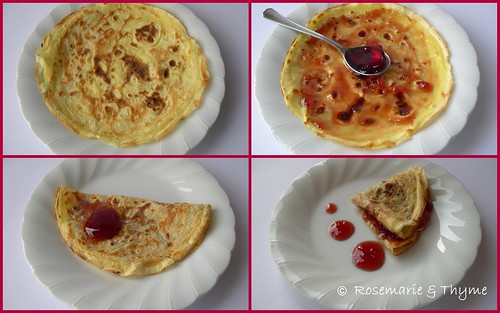
Here I am with my Dutch Crunch Bread Rolls. I was really curious about this type of bread I never heard of.
Some similaries with Sara and Erica? I also stared baking when I was at Law School. In Sydney, in the Land od Oz :)
I decided to make the 6 rolls recipe and I filled my bread rolls one with bresaola, rucola and potato, the other with bresaola and sun dried tomatoes. Bresaola is a typical italian product. Salmon and rucola would also have been nice. Rucola is just starting to grow outside now, so I thought I'd choose in season veggies from my garden!
I had absolutly no trouble with the dough making process. I just had to add a little more water than indicated, but that was probably my fault as I put in all 4 cups of flour without checking if the last half cup was needed. I don't know, but I'll check with fellow Daring Bakers.
La vesione in italiano è più in basso nella pagina. Scroll down for the Italian version.
----------------.----------------
And here is what Sara and Erica from Baking JDs wrote to us Daring Bakers to help us with our Dare. I always prefer to quote the author.
First, let us introduce ourselves. We are Sara
and Erica from Baking JDs. During our first year of law school, we discovered
Daring Bakers and decided that monthly baking was just the thing to get us to
take a break from our studies and do something that we both already loved.
Since we graduated in May 2010, we’ve continued the tradition. As busy
attorneys, it hasn’t gotten any easier to find the time, but it’s always worth
it.
Both of us live in San Francisco, which is home to all kinds of
culinary traditions. Of course, sourdough bread is one of the first things that
springs to people’s minds. For our challenge, however, we’ve decided to make
Dutch Crunch bread. Sara grew up in the Bay Area, but was dismayed when she
moved away for college that Dutch Crunch bread is not usually available outside
of Northern California. For many folks from
the Bay Area, a sandwich just isn’t complete without Dutch Crunch bread.
Technically, Dutch Crunch doesn’t refer to the
type of bread, but rather the topping that is spread over the bread before
baking. In Dutch it’s called Tijgerbrood or “tiger bread” after the tiger-like
shell on the bread when it comes out of the oven. The final product has a
delightful sweet crunch to it that makes it perfect for a sandwich roll. It’s a
common option at sandwich shops all over the Bay Area and is often one of the
first breads to run out.
Learn more about the history of Dutch Crunch
bread, particularly in the Bay Area, here, here, and here.
Therefore, the heart of this challenge is the
topping. While we’ve provided a few bread recipes that worked great for us, it
is up to you what rolls or loaves you want to turn into Dutch Crunch, which
should leave room for vegan and gluten-free options. We’d recommend a nice,
soft sandwich-appropriate roll with not too much crust, so the topping can
really stand out. Once you have your final loaves, you’re required to use your
bread to construct a sandwich of your choice!
Our choice? Anything involving avocado, of
course! We can’t wait to see what you come up with.
Recipe Source: The recipe for the Dutch Crunch
topping came from Rose Levy Beranbaum’s The Bread Bible. The recipes for the
breads we’ve suggested came from The Bread Bible and an adaptation of a recipe
found on bakingbites.com
(http://bakingbites.com/2006/09/cooking-school-dutch-crunch-bread/).
Blog-checking lines: Sara and Erica of Baking
JDs were our March 2012 Daring Baker hostesses! Sara & Erica challenged us
to make Dutch Crunch bread, a delicious sandwich bread with a unique, crunchy
topping. Sara and Erica also challenged us to create a one of a kind sandwich
with our bread!
Posting Date: March 27, 2012
A Note about Rice Flour: While rice flour is
easy to find in San Francisco,
we weren’t sure of its availability around the world. If it’s not in your local
grocery store, we suggest checking in a specialty shop (somewhere that would
sell gluten-free foods) or online (e.g., amazon.com). Be sure not to buy the
sweet or glutinous variety, though we’ve found that either white or brown rice
flour works just fine.
If you are unable to find it, or if you’re just
curious about how to make it yourself, it’s not very hard to do at all. There
are a number of tutorials online, but the basic idea is to put rice in a spice
grinder or something else that can break grains, and grind it until it is a
fine flour-like powder. You will likely need to sift the final product through
a sieve.
We found that home-made rice flour altered that
balance of ingredients in the topping recipe, specifically requiring more rice
flour to make it the appropriate paste-like consistency. As we note below, you
want the topping to form a thick layer on the bread. If it’s too watery or
drippy, it will not stay on top of the bread and crack like it’s supposed to.
Here are some helpful links, but we encourage
you to rely on whatever method you find easiest for making rice flour, if you
decide to make it yourself.
Mandatory Items: You must make the Dutch Crunch
topping and use it on your choice of bread or roll. You must use your finished
bread to construct a sandwich of your choice – the more creative the better!
Variations allowed: You may use any bread or
roll recipe. We have provided suggestions but if you use your own recipe we
recommend opting for a soft roll or bread. You may buy rice flour or make your
own. While you must make a sandwich, the variety is up to you!
Preparation time: Dutch Crunch Topping: 15
minutes active time, 15 minutes passive time; Soft White Roll: 20 minutes
active time, 2 hours passive time; Brown Rice Bread: less than 1 hour active
time; 2-3 hours passive time.
Equipment required:
Small bowl
2 large bowls, or a large bowl and a
stand-mixer bowl
Stand mixer with paddle (or whisk) and
dough-hook attachments (optional)
Wooden and regular spoon(s)
Whisk
Knife or dough cutter/scraper (optional,
depending on your recipe)
Bread pan(s) or baking tray(s)
Plastic wrap or something else to cover the
dough while it rises
Dutch Crunch Topping
Servings: This recipe should make sufficient
topping for two 9x5 loaves (23cmx13cm) or 12 rolls. If you make only 6 rolls in
the first soft white roll recipe, you can cut the topping recipe in half.
We’ve provided this recipe first because it is
the mandatory aspect of the challenge. Note, however, that you should not
prepare the topping until the bread you’ve selected to bake is almost finished
rising (~15 minutes from baking).
Ingredients
2 tablespoons (2 packets) (30 ml) (15 gm/½ oz)
active dry yeast
1 cup (240 ml) warm water (105-115º F) (41-46°C)
2 tablespoons (30 ml) (30 gm/1 oz) sugar
2 tablespoons (30 ml) vegetable oil
½ teaspoon (2½ ml) (3 gm) salt
1½ cups (360 ml) (240 gm/8½ oz) rice flour
(white or brown; NOT sweet or glutinous rice flour) (increase by 1 cup or more
for home-made rice flour)
Directions:
1. Combine
all ingredients in a large bowl and beat with a whisk; beat hard to combine.
The consistency should be like stiff royal icing – spreadable, but not too
runny. If you pull some up with your whisk, as shown below, it should drip off
slowly. Add more water or rice flour as necessary. Let stand 15 minutes.
2. Coat
the top of each loaf or roll with a thick layer of topping. We tried coating it
with a brush but it worked better just to use fingers or a spoon and kind of
spread it around. You should err on the side of applying too much topping – a
thin layer will not crack properly.
3. Let
stand, uncovered, for any additional time your recipe recommends. With the Soft
White Roll, you can place the rolls directly into the oven after applying the
topping. With the Brown Rice Bread, the loaves should stand for 20 minutes with
the topping before baking.
4. When
baking, place pans on a rack in the center of the oven and bake your bread as
you ordinarily would. The Dutch Cruch topping should crack and turn a nice
golden-brown color.
Soft White Roll
Servings: Six sandwich rolls
This recipe approximates the quintessential
white sandwich roll found throughout the Bay Area. The recipe is simple, quick,
and addictive.
Ingredients
1 tablespoon (1 packet) (15 ml) (7 gm/ ¼ oz)
active dry yeast
¼ cup (60 ml) warm water (105-110º F) (41-43°C) (No need to use a
thermometer – it should feel between lukewarm and hot to the touch).
1 cup (240 ml) warm milk (105-110º F) (41-43°C) (We’ve tried both nonfat
and 2%, with no noticeable difference)
1½ tablespoons (22½ ml) (20 gm/ ? oz) sugar
2 tablespoons (30 ml) vegetable oil (plus
additional olive or vegetable oil for greasing bowl during rising)
1½ teaspoons (7½ ml) (9 gm/? oz) salt
Up to 4 cups (960 ml) (600 gm/21oz) all purpose
flour
Directions:
1. In
the bowl of an electric mixer or large mixing bowl, combine yeast, water, milk
and sugar. Stir to dissolve and let sit for about 5 minutes (The mixture should
start to bubble or foam a bit and smell yeasty).
2. Add
in vegetable oil, salt and 2 cups of flour. Using the dough hook attachment or
a wooden spoon, mix at medium speed until the dough comes together. (The photo
to below is with the first 2 cups of flour added).
3. Add
remaining flour a quarter cup at time until the dough pulls away from the sides
of the bowl, as shown in the photo below (For us, this usually required an
additional 1½ to 2 cups of flour).
4. Turn
out onto a lightly floured surface and knead for about 4 minutes, until smooth
and elastic.
5. Place
in a lightly greased bowl and cover with plastic wrap. Let rise for 1 hour, or
until doubled (or more) in size (see photo comparison).
6. Once
the dough has risen, turn it out onto a lightly floured surface and divide it
into 6 equal portions (if you’d like to make rolls) or 2 equal portions (if
you’d like to make a loaf) (using a sharp knife or a dough scraper works well).
Shape each into a ball or loaf and place on a parchment-lined baking sheet (try
not to handle the dough too much at this point).
7. Cover
with plastic wrap and let rise for 15 minutes while you prepare the topping.
8. Coat
the top of each roll or loaf with the topping as described above. While the
original recipe recommends letting them stand for 20 minutes after applying the
topping, I got better results by putting them directly into the oven.
9. Once
you’ve applied the topping, bake in a preheated moderately hot 380ºF/190°C/gas
mark 5 for 25-30 minutes, until well browned. Let cool completely on a wire
rack before eating.
Our finished products: Note the roll in the
foreground on the left. This is what happens if you don’t put enough topping on
the bread – no cracking! So be sure to load on the topping.
Brown Rice Bread
Servings: Two 9x5 inch (23cmx13cm) loaves
If you’re up for more of a challenge, this
recipe creates an interesting bread that incorporates cooked brown
rice—something that was new to us. The resulting loaf has, as Hensperger
describes, a “nubbly” texture and a very light almost-sweetness to it. Great
for toasting.
Ingredients
1 cup (240 ml) warm water (105-115ºF) (41-46°C)
2 tablespoons (2 packets) (30 ml) (15 gm/½ oz)
active dry yeast
1 teaspoon (5 ml) (5 gm) sugar or honey (we used
sugar, which worked great)
1 cup (240 ml) warm buttermilk (105-115 ºF)
(41-46°C)
½ cup (120 ml) honey
¼ cup (60 ml) vegetable oil (plus additional
olive or vegetable oil for greasing bowl during rising)
1 tablespoon (15 ml) (20 gm/? oz) salt
2 cups (480 ml) (200 gm/7 oz) cooked and cooled
short-grain brown rice
5½ -6 cups (1440 ml) (840 gm/30 oz) unbleached
all-purpose flour or bread flour
Directions:
1. Pour
the warm water in a small bowl. Sprinkle yeast and sugar over surface. Stir to
dissolve and let stand at room temperature until foamy, about 10 minutes.
2. In
a large bowl using a whisk or in the work bowl of a heavy-duty mixer fitted
with the paddle attachment, combine the buttermilk, honey, oil, and salt. Add
the rice and beat until smooth.
3. Add
the yeast mixture and 2 cups flour. Beat hard until smooth for 3 minutes.
4. Add
the flour, ½ cup at a time, until a soft, bulky dough that just clears the side
of the bowl is formed.
5. Turn
the dough out onto a lightly floured work surface and knead until smooth and
springy, about 5 minutes, dusting with flour 1 Tbsp. at a time as needed to
prevent sticking. This dough will be slightly sticky. (If kneading by machine,
switch from the paddle to the dough hook and knead for 4 to 5 minutes, or until
the dough is smooth and springy and springs back when pressed. If desired,
transfer the dough to a floured surface and knead briefly by hand).
6. Place
the dough in a greased deep bowl. Turn the dough once to coat the top and cover
with plastic wrap. Let rise at room temperature until doubled in bulk, 1½ to 2
hours.
7. Gently
deflate the dough. Turn the dough out onto a lightly floured work surface.
Grease two 9-by-5-inch (23-by-13
cm) loaf pans. Divide the dough into 2 equal portions.
Form the portions into loaves. Let rest 15 minutes.
8. Coat
the top of each loaf with the topping as described above, including letting
them stand, uncovered, 20 minutes, until dough rises level with the tops of the
pans.
9. Twenty
minutes before baking, preheat the oven to moderately hot 380ºF/190°C/gas mark
5. Place the pans on a rack in the center of the oven and bake 45 to 50 minutes
or until brown and the loaves sound hollow when tapped with your finger.
Transfer the loaves to a cooling rack. Cool completely before slicing.
Storage & Freezing Instructions/Tips:
Store as you would any bread – in a bread box,
a paper bag, or loose plastic wrap. Both varieties suggested are best in the
first couple of days. The loaves or rolls can also be frozen in plastic –
simply toast to reheat.
Disclaimer: The Daring Kitchen and its members
in no way suggest we are medical professionals and therefore are NOT
responsible for any error in reporting of “alternate baking/cooking”. If you
have issues with digesting gluten, then it is YOUR responsibility to research
the ingredient before using it. If you have allergies, it is YOUR
responsibility to make sure any ingredient in a recipe will not adversely affect
you. If you are lactose intolerant, it is YOUR responsibility to make sure any
ingredient in a recipe will not adversely affect you. If you are vegetarian or
vegan, it is YOUR responsibility to make sure any ingredient in a recipe will
not adversely affect you. The responsibility is YOURS regardless of what health
issue you’re dealing with. Please consult your physician with any questions
before using an ingredient you are not familiar with. Thank you!
Versione in italiano
Baia di San Francisco
picture by Sigma under Creative Commons Licence
Per ottenere sulla crosta del pane l'effetto visibile nella foto, viene spalmata una pastella poco prima della fine della lievitazione. Questo pane di origine Olandese, è tipico nella zona della Baia di San Francisco. Questo topping può essere messo su qualsiasi tipo di pane. Io ho scelto di eseguire la ricetta dei medaglioni che in inglese si chiamano bread rolls. Il sapore della crosta è leggermente dolciastro, ma gradevole.
Un unica riserva da parte mia è dovuta alla quantità di lievito indicato. Ho però letto ricette alternative date da altri Daring Bakers che prevedono molto meno lievito. Con buona pace del nostro stomaco.
Dutch Crunch Topping: La pastella
Queste dosi sono sufficienti per ricoprire due pagnotte da 23cm x 13cm o 12 medaglioni. Se fate solo 6 medaglioni con la ricetta qui riportata, dovrete quindi usare mezza dose.
Questa ricetta viene pubblicata prima di quella del pane, essendo l'elemento essenziale della preparazione. Va però sottolineato che il topping va preparato solo quando il pane già messo in forma ha quasi finito di lievitare. Circa un quarto d'ora prima di infornare.
Ingredienti
2 bustine o 15 g di lievito di birra disidratato,
240 ml di acqua tiepida (41-46°C),
30 g di zucchero ,
2 cucchiai di olio di oliva o di semi meglio se di arachidi
3 gm (½ cucchiaino)di sale,
240 g di farina di riso (se la macinate in casa ne servirà anche il doppio)
Mescolare gli ingredienti in una ciotola con una frusta, lavorare bene fin quando si sia amalgamata bene. La pastella deve avere una consistenza cremosa, non troppo liquida. Sollevando un po' di impasto con la frusta, questo deve scivolare via pesantemente. In caso la consistenza non sia quella desiderata, aggiungere un po' di acqua o farina per raggiungere quella giusta.
Spalmare il topping sui panini 15 minuti prima di infornarli. Coprire i panini con uno strato piuttosto spesso usando le dita: se lo strato e' troppo sottile la crosta non si romperà una volta in forno e non si formeranno i tipici disegni.
in primo piano si nota la buona alveolatura del panino che infatti è risultato soffice e leggero
MEDAGLIONI O BREAD ROLLS
Questa ricetta da un risultato che si avvicina moltissimo ai medaglioni che si trovano nella zona della Baia di San Francisco conosciuta con il nome di The
Bay Area. E' facile, veloce e da assuefazione :)
Ingredienti per 6 medaglioni
1 bustina (7 g) di lievito di birra disidratato,
60 ml di acqua tiepida (41-43°C) fra tiepida e calda,
240 ml di latte tiepido va bene anche parzialmente scremato,
20 g di zucchero,
2 cucchiai (30 ml) di olio di oliva o di arachidi,
1½ cucchiaino o 9 g di sale,
600 g di farina
Mettere in una ciotola o nella tazza della planetaria l'acqua, il lievito, il latte e lo zucchero. Lasciar attivare per 5 minuti (si dovrebbero formare delle bolle in superficie). Aggiungere l'olio, 300 grammi della farina totale di farina ed il sale. Mescolare con un cucchiaio di legno o con il gancio della plantetaria per amalgamare gli ingredienti e aggiungere il resto della farina un po' alla volta fermandosi se l'impasto risulta troppo asciutto. Poi impastare con il gancio o a mano finché l'impasto non diventi liscio ed elastico. Riporre in una ciotola unta d'olio e lasciar riposare coperto con pellicola per un'ora o fino al raddoppio. Dopo questo tempo, riprendere l'impasto e dividerlo in 6 parti uguali, formare delle palline (cercando di non lavoralo troppo per non vanificare la lievitazione), poggiarle su una teglia ricoperta di carta forno, coprirle e lasciarle riposare per 15 minuti. Nel frattempo preparare la copertura.
Spalmare i panini con abbondante copertura e infornarli in forno gia' caldo (200° C). Cuocere per 25-30 minuti finché si saranno formate le caratteristiche crepe sulla superficie e il panino sara' diventato dorato.
























